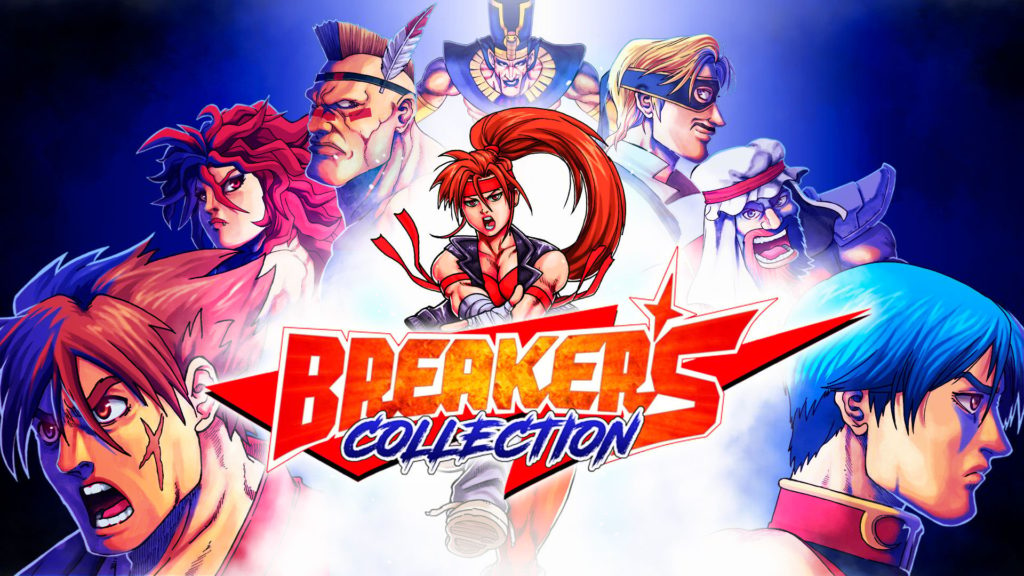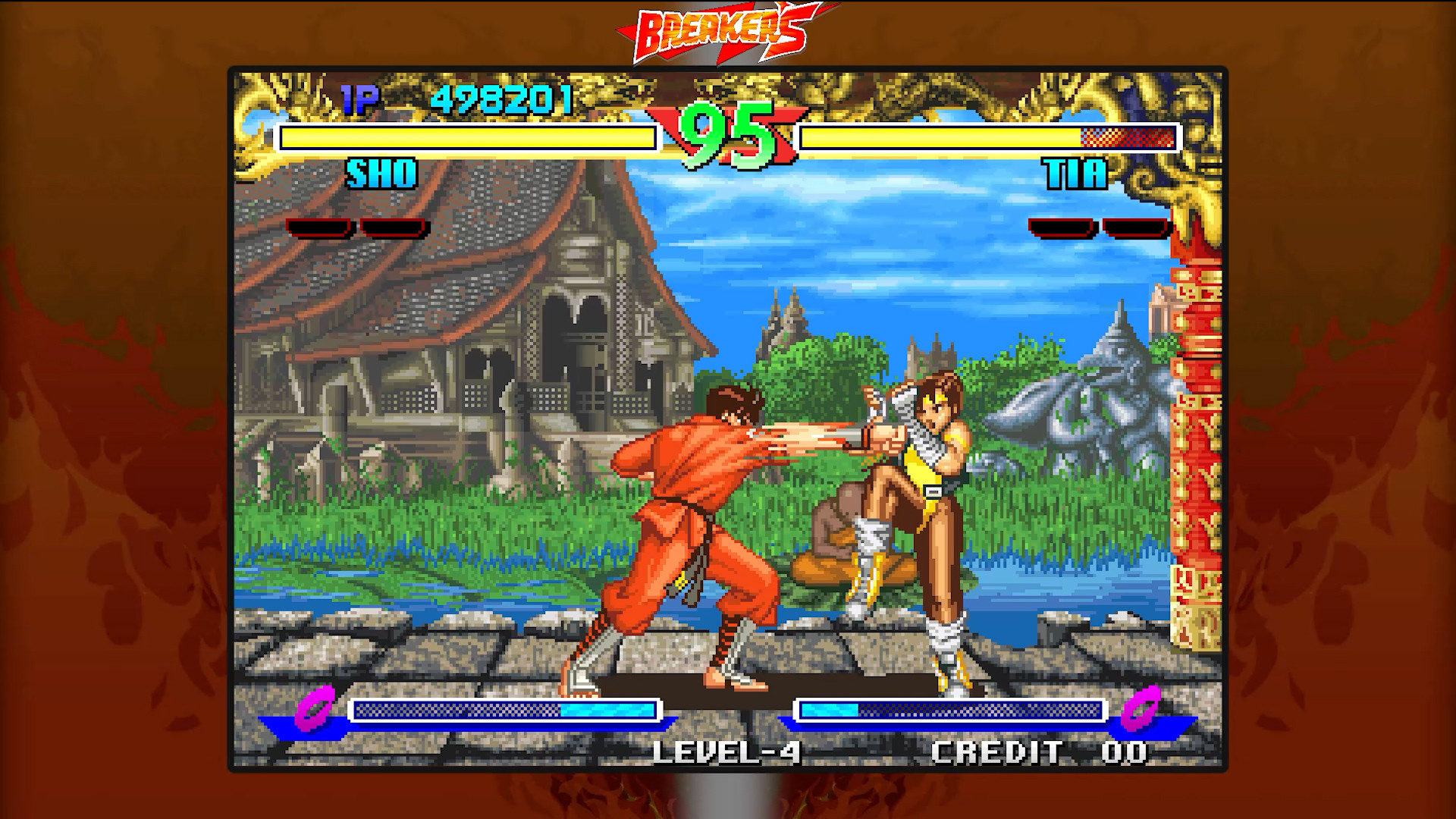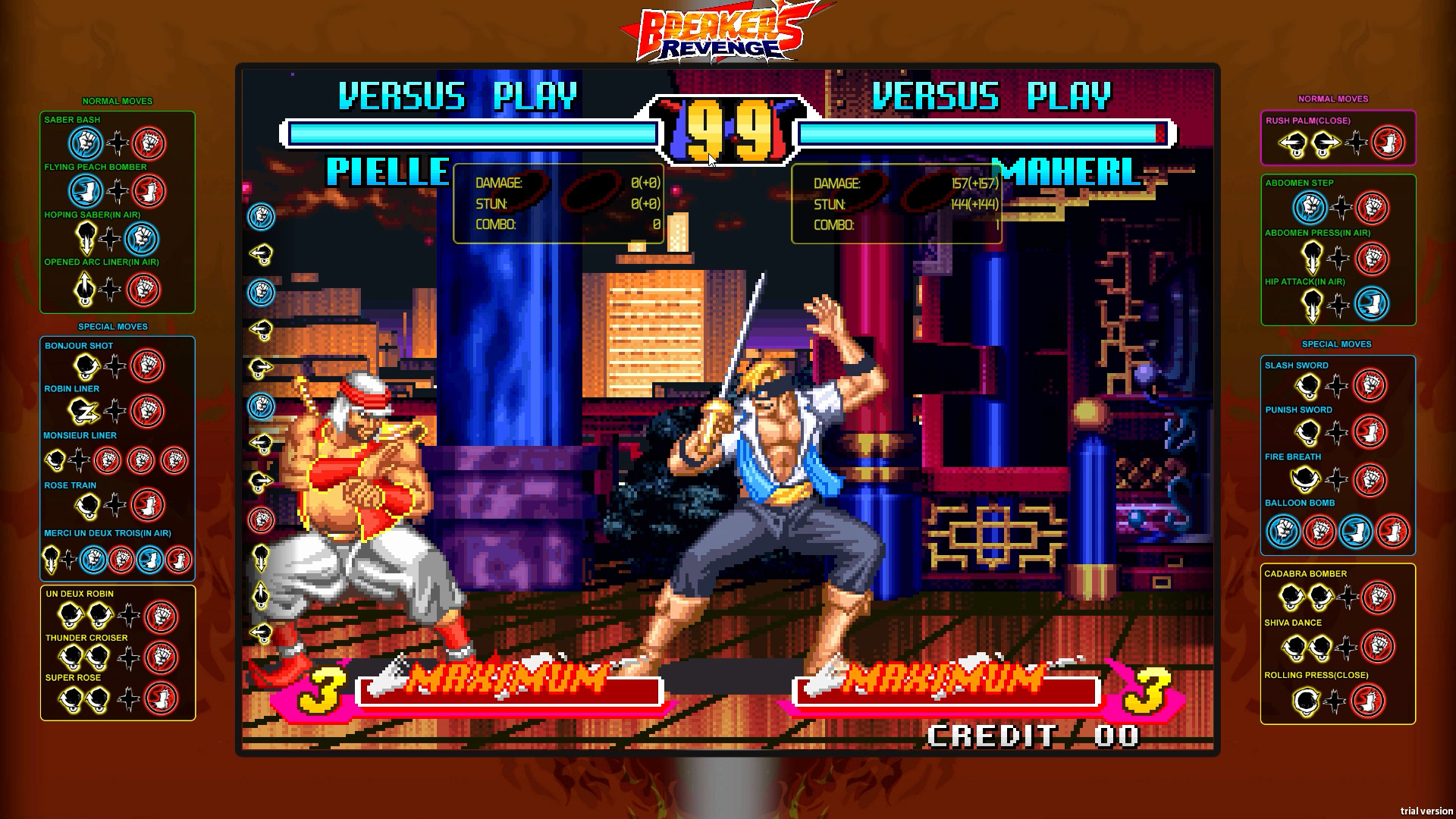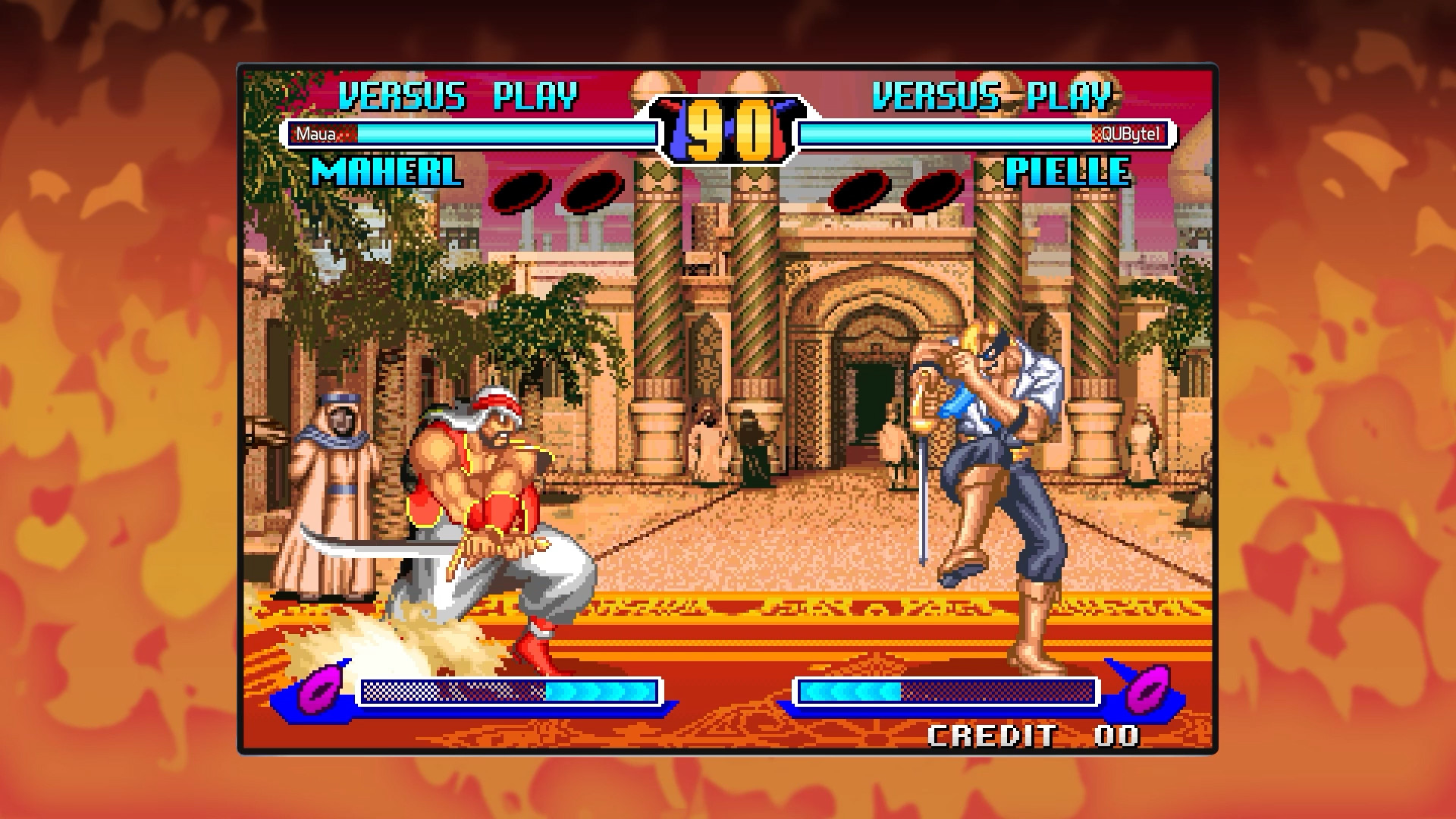
The 90s was an era that helped define the arcade scene and fighting game genre. Amongst all the Street Fighters, Mortal Kombats, Tekkens, King of Fighters, and more, were also a handful of lesser-known, obscure fighters that often imitated, or took inspiration from the more successful and established titles. One of those was Breakers, developed by Visco Corporation and released to arcades in 1996, then again two years later with its follow-up, Breakers Revenge.
Even though it struggled to stand out from the other fighters, it somehow became a cult favourite with fighting game enthusiasts. Breakers only had two ports to home consoles on the Neo Geo CD and Sega Dreamcast, until now, with the Breakers Collection now available on PlayStation 4/5, Xbox Series X/S, Xbox One, Nintendo Switch, and PC, this time developed by Brazilian studio, QUByte Interactive.
The plot of Breakers is about a mysterious tournament known as FIST, the Fighting Instinct Tournament, where fighters from all over the globe, each with their own motives to enter, battle it out before facing off with the tournament host, Bai-Hu, an evil spirit with incredible power, to win the massive prize money and be known as the World’s Best. Even if the game’s overall story isn’t the most original, which was common in the 90s, it’s all the motivation the fighters need to bring their martial arts skills, weapons, and special powers to the fight.
The Breakers Collection includes both Breakers and Breakers Revenge, the latter of which is actually an upgraded version of the original game rather than a sequel. Both games are mostly the same, but with a few differences.

Breakers Revenge has one additional character, stage designs have a slightly darker tone, different character art in the select and versus screens, and the CPU opponents are more difficult than before. Having the option to play both versions of Breakers is a great way for fans and newcomers to experience the long-forgotten and obscure arcade fighter.
Gameplay-wise, it feels very much like classic Street Fighter and SNK games from that era. It uses a 4-button control system for Light Punch, Heavy Punch, Light Kick, and Heavy Kick, and a Super Combo Meter for up to three levels. A lot of the characters’ moves take some obvious inspiration from various well-known Street Fighter moves, but it also has its own original ideas. It’s easy to name a Street Fighter character when seeing certain moves on the screen, but Breakers still manages to make them distinctive to each character, fitting their personalities and standing out on their own with their unique designs putting their own spin on them, instead of just being blatant ripoffs.
Each fighter has two or three Super Combos, and they are quite satisfying to pull and see unfold on screen, dealing some major damage. Overall the controls feel incredibly smooth and responsive, ideal for the fast-paced gameplay Breakers has to offer. Players also have the option to have the entire move list on display during gameplay, instead of constantly pausing and navigating through the menus.
There are eight playable characters in Breakers, and nine in Breakers Revenge, and both have the same final boss. Each character has their own unique design, personality, fighting style, and special moves. Sho, Dao-Long, Tia, Pielle, Condor, Maherl, Rila, Alsion III, and Saizo, who was the only new character added in Breakers Revenge. Players will have a wide selection of fighters to choose from and suit their play style.

The final boss, Bai-Hu is very overpowered, dealing huge damage, moves fast, is difficult to land a hit on, and is just plain unfair. Exactly how a fighting game boss should be. Bai-Hu is no doubt one of the toughest fighting game bosses out there and a real test for fighting game enthusiasts.
There are eight difficulty settings to allow players to face easier CPU opponents, or really test their mettle. Although even the easiest difficulty setting can still be quite hard, which can be a problem for beginner players, fighting gamers will of course be relishing the tougher challenges.
Breakers Collection offers a variety of modes including Arcade for players to fight their way up the ladder and take on Bai-Hu, Versus for friends to battle each other, Team Battle for players to select two or three characters in either Arcade or Vs. modes, much like King of Fighters, Training, for players to perfect their moves and combos, Online, to challenge other players around the world, and a Gallery to view any unlocked art.
Online only has Breakers Revenge available to play, which is the preferred version by most and helps keep players in a smaller circle so no one misses out. Rollback netcode is thankfully included for smooth online play with minimal lag, as well as crossplay, opening it up for even more matchups with players around the world on different consoles. In my personal experience, I’ve had some perfectly smooth matches with little to no slowdown and some incredibly laggy matches, which of course depends on the opponents’ location and connection quality.
The only downside is that there don’t seem to be many active players to match up with at this time. There were a few times when there was no one to play against at all, even switching between Ranked and Casual, and searching the Lobbies.

This is likely due to the time of the day and the game’s lack of popularity, despite being a cult favourite. Only time will tell if the player numbers will build up or dwindle down, especially with some other highly anticipated fighting games on their way very soon. Even with this drawback, for the most part, online matches have been a blast.
The Gallery is a very nice addition to check out various art and concept sketches of characters and stage designs. Fanart is also available with credits listing the artists’ names and handles, although most of it is just Tia, likely because she’s the token attractive female. New art can be unlocked by just playing the game and completing various tasks.
The graphics, animation, soundtrack, and overall presentation stay true to the original games, giving it that real nostalgic feeling. Despite being a retro game with pixelated graphics, its actually aged quite well thanks to its smooth animation quality, which really compliments the feel of the game.
The soundtrack, however, wasn’t one of Breakers’ best features and hasn’t aged as well. It has some good tracks whereas others are not-so-good, so players will either find it annoying or appreciate the nostalgia.
Breakers Collection is a very nice trip down memory lane for fans of the forgotten game, and a great introduction for diehard fighting gamers and newcomers. The perfect ports of both games provide that same fast-paced, exciting, and intense competitive fighting game experience both offline and online. The obscure arcade fighter that later became a cult classic is now more available than ever for fans to appreciate and enjoy on modern consoles. Thanks to QUByte Interactive, Breakers Collection packs a punch and is a must-buy for fighting game enthusiasts.

The Good
- Perfect ports of Breakers and Breakers Collection
- Controls feel smooth and responsive
- Fast paced, exciting, intense and competitive
- Forgotten cult favourite arcade fighter now more available than ever
- Variety of different characters with unique special moves
- That nostalgic feeling
- Can have the entire move list on display during gameplay
- Smooth online play with rollback netcode and crossplay
- Animation quality has aged well
- Gallery with plenty of art
- Fun and difficult final boss
The Bad
- Easier difficulty settings can still be hard for beginners
- Occasional laggy matches online
- Soundtrack hasn’t aged well








